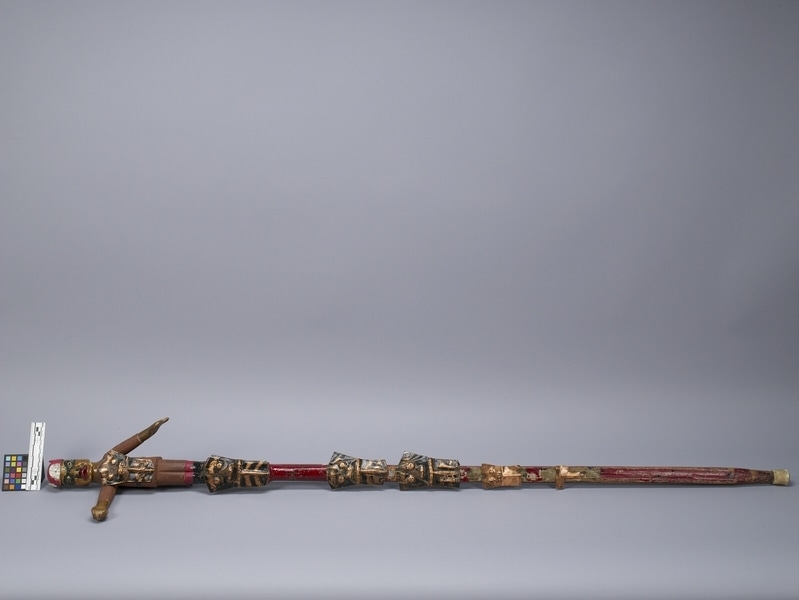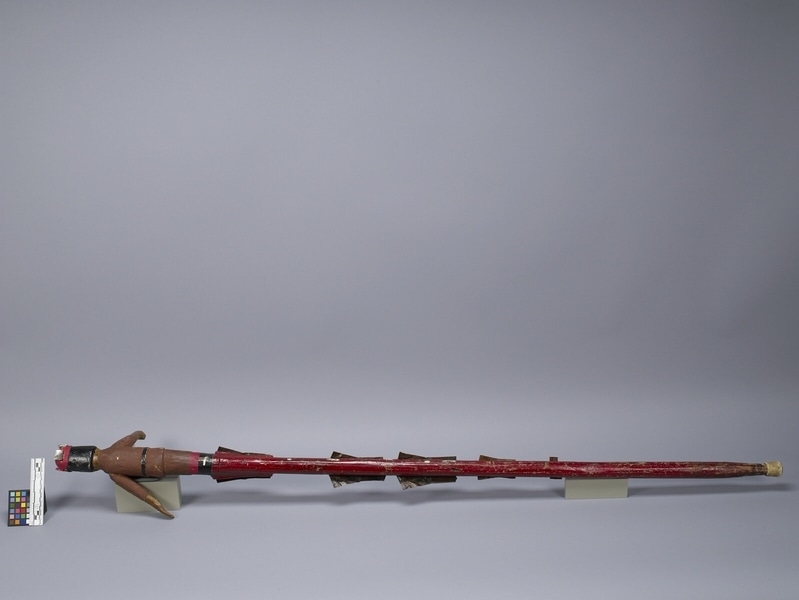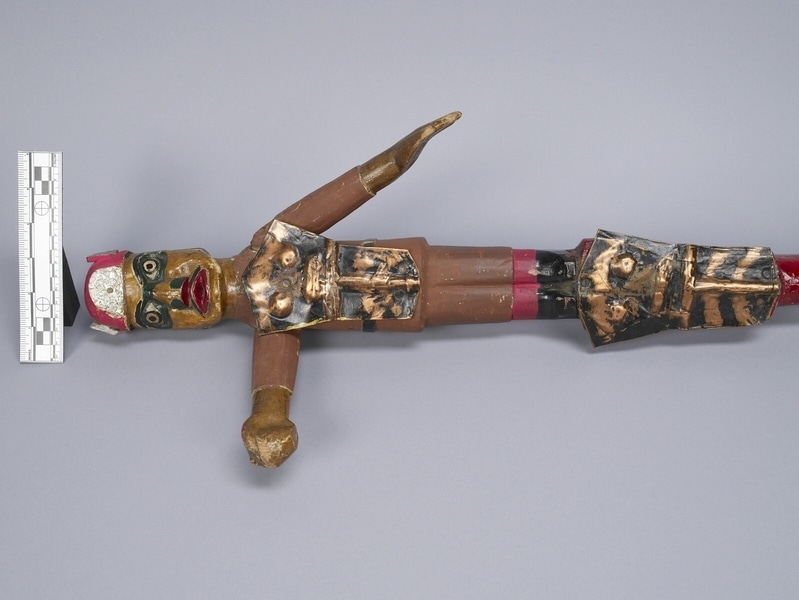Speaker's Staff Item Number: A9181 from the MOA: University of British Columbia



Description
Long staff with carved standing human figure joined (with wiggle nails) to the top. Six miniature coppers nailed to the staff, the uppermost nailed to the figure's chest. The lowest copper is a t-shaped scrap. A piece of abalone is glued to the front of the staff below the two central coppers, and the entire staff is painted red. The figure stands erect with his right arm outstretched, the other at his side. He wears brown-painted clothing and a red painted skull cap decorated with four pieces of abalone at front, back and sides. The face carving is highlighted with red and black paint and is heavily shellacked. Rubber cap on bottom.
History Of Use
Speaker's staff or talking stick.
Iconographic Meaning
Represents Copper Maker, tlh!aqwagila, who, while walking on the sand, saw clams squirting in many colours. He dug and found little coppers that brought him much wealth. James King's ancestor was Copper Maker, thus the staff was carved with the "copper clams" as his crest (J.C. King, 1969).
Narrative
According to Hawthorn (Kwakiutl Art, Plate X-B,C), this staff was owned by James King of Kingcome Inlet, originally made for J. C. King's great-uncle or grandfather in 1890. The staff is named "Kla Kwa Gila", meaning 'copper making'. Jim was a very important potlatch speaker and last of the traditional speakers. He came from a high ranking family. Bill Cranmer, who was like an adopted son to Jim King was given all of his rights. The staff was carved with "copper clams" because Copper Maker was a crest of King (J.C. King 1969).
Item History
- Made in British Columbia, Canada during 1890
- Collected in Kingcome Inlet, British Columbia, Canada and Ukwanalis, British Columbia, Canada during 1890
- Owned by James Charles King before November 3, 1969
- Received from James Charles King (Seller) and Unknown (Funding source) on November 3, 1969
What
Who
- Culture
- Kwakwaka'wakw
- Previous Owner
- James Charles King
- Received from
- James Charles King (Seller) and Unknown (Funding source)
Where
- Holding Institution
- MOA: University of British Columbia
- Made in
- British Columbia, Canada
- Collected in
- Kingcome Inlet, British Columbia, Canada and Ukwanalis, British Columbia, Canada
When
- Creation Date
- during 1890
- Collection Date
- during 1890
- Ownership Date
- before November 3, 1969
- Acquisition Date
- on November 3, 1969
Other
- Condition
- fair
- Current Location
- Case 27
- Accession Number
- 2036/0001